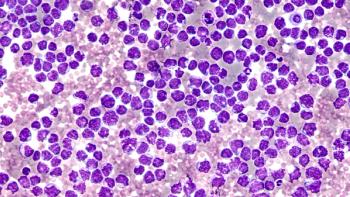
Shared Molecular Pathways Link IPF and RA-Associated Lung Disease
Key Takeaways
- A biomarker panel for IPF may identify RA patients at higher risk for ILD, supporting biological overlap between IPF and RA-ILD.
- The study involved over 2500 US veterans and showed strong associations between biomarker scores and ILD presence and development.
An IPF-derived biomarker profile shows a reproducible association with ILD risk across three RA cohorts.
A multicenter study published in
“There exists an unmet need to accurately identify RA patients at an increased risk for the presence or development of ILD, and routinely measured clinical and laboratory data have a limited ability to fill this void,” researchers explain. “Accurate measures to identify these patients may help to select RA patients more likely to benefit from earlier or more frequent screening for RA-ILD with chest HRCT and PFTs.”
Interstitial lung disease affects approximately 5 to 15% of patients with rheumatoid arthritis and is notorious for its adverse impact on survival, with median survival post-diagnosis estimated between 3 and 8 years.2 Recognizing the clinical overlap and shared genetic risk factors between IPF and RA-ILD, researchers evaluated whether 8 serum proteins linked to IPF (eotaxin, Flt-3L, IL-8, MDC, MCP-1, and MMP-2, -7, and -9) could predict ILD among patients with RA. Concentrations were standardized and summed into a composite multibiomarker score.1
The panel was first tested in 2 smaller RA cohorts (n = 93 and n = 71) and then validated in the large Veterans Affairs Rheumatoid Arthritis (VARA) registry (n = 2507). The validation cohort included 106 patients with prevalent ILD and 153 who developed ILD over 20,000 patient-years of follow-up.
Across all cohorts, higher biomarker scores were strongly associated with the presence and future development of ILD, with associations observed for both usual interstitial pneumonia (UIP) and non-UIP patterns, though the relationship was stronger for non-UIP disease in prevalent ILD. The authors emphasized that these findings were exploratory and hypothesis-generating, given the small subgroup sizes and potential for imaging misclassification.
In the VARA validation cohort, patients with prevalent ILD had mean biomarker scores of 1.04, compared with -0.08 in those without ILD (P = .003). Individuals in the highest quartile had a 2.14-fold increased odds of prevalent ILD (P = .01) and a 2.45-fold higher risk of developing ILD during follow-up (P < .001) compared with those in the lowest quartile.
Cumulative hazard modeling showed nearly a 20% ILD incidence by 15 years among those in the highest quartile, compared with <10% in lower quartiles. Adding the biomarker score to clinical predictors such as age, smoking status, anti-CCP positivity, and RA disease activity modestly improved discrimination (Harrell’s C = 0.666 vs 0.627; P = .028). However, clinical performance was limited; scores > –1 yielded 80% sensitivity but only 32% specificity, while scores ≥ 4 were 90% specific yet detected just 17% of cases.
After removing MMP-7 from the score, an analyte already known to correlate with RA-ILD, the biomarker panel still predicted new-onset ILD (aHR 2.00; 95% CI, 1.26-3.17) but not prevalent disease. “Together, these findings provide further support for a shared etiopathogenesis between RA-ILD and IPF and illustrate the potential value of peripheral blood biomarker panels for RA-ILD risk stratification,” investigators note.
The predominantly male veteran population, who were current or former smokers, limits the generalizability of the study. Biomarker components varied slightly between cohorts, and ILD classification relied on clinical documentation. Nevertheless, consistent associations across 3 independent groups strengthen the biological link between IPF-related biomarkers and RA-ILD risk.
References
1. Luedders BA, Kass D, Baker JF, et al. Performance of an idiopathic pulmonary fibrosis derived multibiomarker panel for rheumatoid arthritis-associated interstitial lung disease. Arthritis Rheumatol. Published online September 16, 2025. doi:10.1002/art.43383
2. Farquhar HJ, Beckert N, Beckert L, et al. Survival of adults with rheumatoid arthritis-associated interstitial lung disease - a systematic review and meta-analysis. Semin Arthritis Rheum. 2023;60:152187. doi:10.1016/j.semarthrit.2023.152187
Newsletter
Stay ahead of policy, cost, and value—subscribe to AJMC for expert insights at the intersection of clinical care and health economics.













































